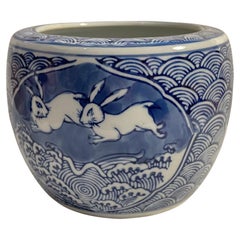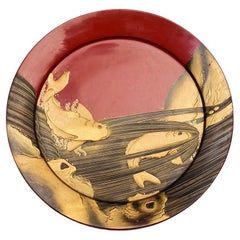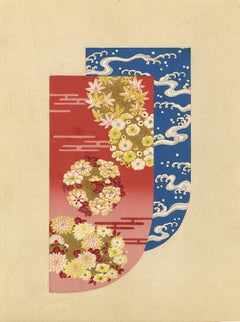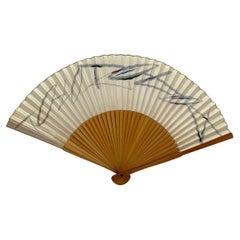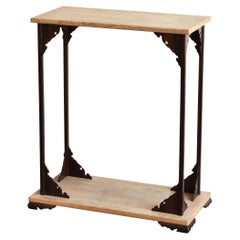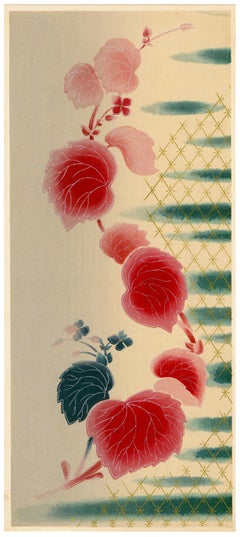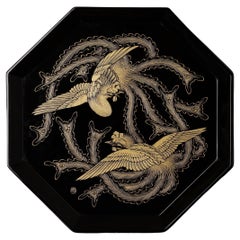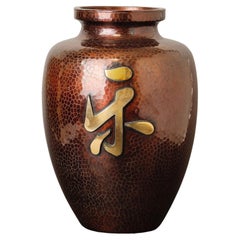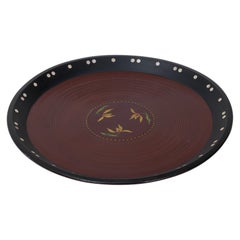Showa Design Art
1990s Japanese Ceramics
Porcelain
Mid-20th Century Japanese Sculptures and Carvings
Wood
1930s Showa Abstract Prints
Screen
Vintage 1980s Japanese Showa Antiquities
Paper
20th Century Japanese Showa Furniture
Other
Early 1900s Showa Figurative Prints
Woodcut
20th Century Japanese Showa Lacquer
Wood, Lacquer
20th Century Japanese Showa Metalwork
Copper
Early 20th Century Japanese Showa Lacquer
Lacquer
Late 20th Century Japanese Japonisme Dinner Plates
Sandstone
20th Century Japanese Showa Lacquer
Copper
Mid-20th Century Japanese Showa Ceramics
Clay
Vintage 1930s Japanese Art Deco Vases
Bronze
Vintage 1960s Japanese Showa Lacquer
Lacquer, Softwood
Vintage 1960s Japanese Lacquer
Wood, Lacquer
Vintage 1930s Japanese Showa Lacquer
Lacquer
Vintage 1930s Japanese Showa Metalwork
Bronze
20th Century Japanese Showa Metalwork
Bronze
Mid-20th Century Japanese Showa Ceramics
Porcelain
20th Century Japanese Showa Paintings and Screens
Gold Leaf
Late 20th Century Japanese Showa Antiquities
Wood, Lacquer
20th Century Japanese Showa Paintings and Screens
Gold Leaf, Silver Leaf
Mid-20th Century Japanese Taisho Metalwork
Bronze
Mid-20th Century Japanese Showa Scholar's Objects
Iron
20th Century Japanese Showa Furniture
Lacquer
20th Century Japanese Showa Metalwork
Bronze
Early 20th Century Japanese Showa Lacquer
Lacquer
20th Century Japanese Showa Metalwork
Bronze
20th Century Japanese Showa Ceramics
Ceramic
Mid-20th Century Japanese Showa Sculptures and Carvings
Copper, Iron
20th Century Japanese Showa Sculptures and Carvings
Wood
1930s Showa Landscape Prints
Woodcut
1930s Showa Landscape Prints
Woodcut
1930s Showa Figurative Prints
Woodcut
Showa Design Art For Sale on 1stDibs
How Much is a Showa Design Art?
Finding the Right Asian-art-furniture for You
From Japanese handmade earthenware pottery, originating circa 14,500 B.C. and adorned with elaborate corded patterns known as jōmon, to natural elm case pieces and storage cabinets built in Qing dynasty–era China to mid-century Thai rice-paper charcoal rubbings, antique and vintage Asian art and furniture make for wonderful additions to all kinds of contemporary interiors.
Eastern elements elevate any home’s decor. Introduce zen sensibility to your living room, dining room and bedroom with the neutral color palettes and the natural materials such as rattan, bamboo and elm that we typically associate with traditional Asian furniture. Decorative handwoven embroideries and textiles originating from India and elsewhere on the continent, which can be draped over a bed or sofa or used as a wall hanging, can be as practical as they are functional, just as you wouldn’t seek out Japanese room-divider screens — often decorated with paintings but constructed to be lightweight and mobile — merely for privacy.
With everything from blanket chests to lighting fixtures to sculptures and carvings, it’s easy to tastefully bring serenity to your living space by looking to the treasures for which the East has long been known.
For British-born furniture designer Andrianna Shamaris, the Japanese concept of beauty in imperfection isn’t limited to her Wabi Sabi collection. She embraces it in her New York City apartment as well. In the living area, for instance, she retained the fireplace’s original black marble while swathing its frame and the rest of the room in bright white.
“We left the fireplace very clean and wabi-sabi, so that it blended into the wall,” says Shamaris, who further appointed the space with a hand-carved antique daybed whose plush pillows are upholstered in antique textiles from the Indonesian island of Sumba.
In the growing antique and vintage Asian art and furniture collection on 1stDibs, find ceramics from China, antiquities from Cambodia and a vast range of tables, seating, dining chairs and other items from Japan, India and other countries.
- 1stDibs ExpertApril 5, 2024Art and design are important for a few reasons. First, they allow people to express feelings and make commentaries on social issues and aspects of daily life, communicating messages that can resonate with others. Thoughtful designs can improve everyday life by making spaces more livable and people more comfortable, while art beautifies environments, making them more enjoyable to be in. Artists and designers demonstrate ingenuity and creativity in their works, inspiring others to do the same, leading to improvements in society. Plus, the art and design produced by a culture provide insight into their values, beliefs and challenges, providing a unique record for future generations studying history, sociology and anthropology. Shop a diverse assortment of fine art on 1stDibs.
- 1stDibs ExpertSeptember 25, 2019
Among the key Art Deco designers were Tamara de Lempicka, Erté, René Lalique, Le Corbusier, Jean Dunand, Léon Bakst, Émile-Jacques Ruhlmann, Sonia Delaunay, Georges Lepape and Jean Després.
